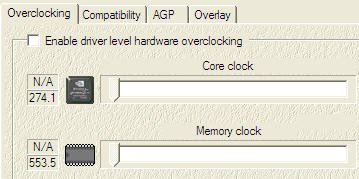System setup, notes, and overclocking
- Intel Pentium 4 2.8GHz 533 FSB Northwood CPU
- ABIT IT7-MAX DDR Motherboard
- 512MB PC3200 (Corsair XMS3200 C2 & Mushkin PC3200) run asynchronously at 178MHz, 2-5-2-2 enhance timings
- Alpha 8942T with 28dBA 80mm fan
- ABIT Siluro OTES Geforce4 Ti 4200 64MB
- NVIDIA GeForce 4 Ti 4600 128MB reference card (300/648 clocks)
- ATi Radeon 9700 Pro 128MB (324/620 clocks)
- Gainward GeForce4 Ti 4200 64MB (250/513 clocks)
- 120GB Western Digital 120JB hard drive with 8MB cache, 7200rpm
- Liteon 40x12x40 CDRW
- Pioneer DVR-104 DVD ReWriter
- Liteon LTD163D 16x DVD drive
- Samcheer 420w PSU
- 21" Sony G500 FD monitor
Software
- Windows XP Professional Build 2600.xpclient.010817-1148
- Windows XP Service Pack 1
- NVIDIA Detonator XP 40.41 drivers (Ti 4200 and Ti 4600)
- ATi Catalyst 2.3 drivers (R9700)
- 3DMark 2001SE
- Codecreatures Pro benchmark
- Return To Castle Wolfenstein v1.33 Checkpoint Demo
- Unreal Tournament 2003
- Serious Sam 2 Demo
- Medal Of Honor: Allied Assault
Notes
All cards had their drivers set to maximum quality. Benchmarks were carried out 3 times and the lowest and highest results were discarded. Vertical 'synch was disabled.
Going by NVIDIA's specifications, the standard, default speeds for a GeForce4 Ti 4200 card is 250MHz core and 500MHz memory respectively. A number of manufacturers attempt to steal a march on one another by increasing certain clocks above specification. We see that with the Gainward Ti 4200 running its memory at 513MHz.
With this enhanced cooling, I expected ABIT to play a similar game. They play it rather well.

Overclocking
I had high hopes for this card from an overclocking point of view, even given its enhanced default timings. Using 3DMark2001SE as a basic tool for establishing the overclocking limit, I was a little disappointed in only being able to get to 300MHz core with rock-solid stability. Going any higher resulted in random locks after prolonged use. Similarly, the memory managed 605MHz with stability. 610MHz+ gave the odd sparkle here or there.
Your mileage will vary. If you get an unexpectedly decent core, you may hit 330MHz. What is certain, however, is that the on-board cooling will help over and above what the stock cooler can provide.
300MHz core and 605MHz memory is nothing to sniff at, though. On to the battery of benchmarks.









